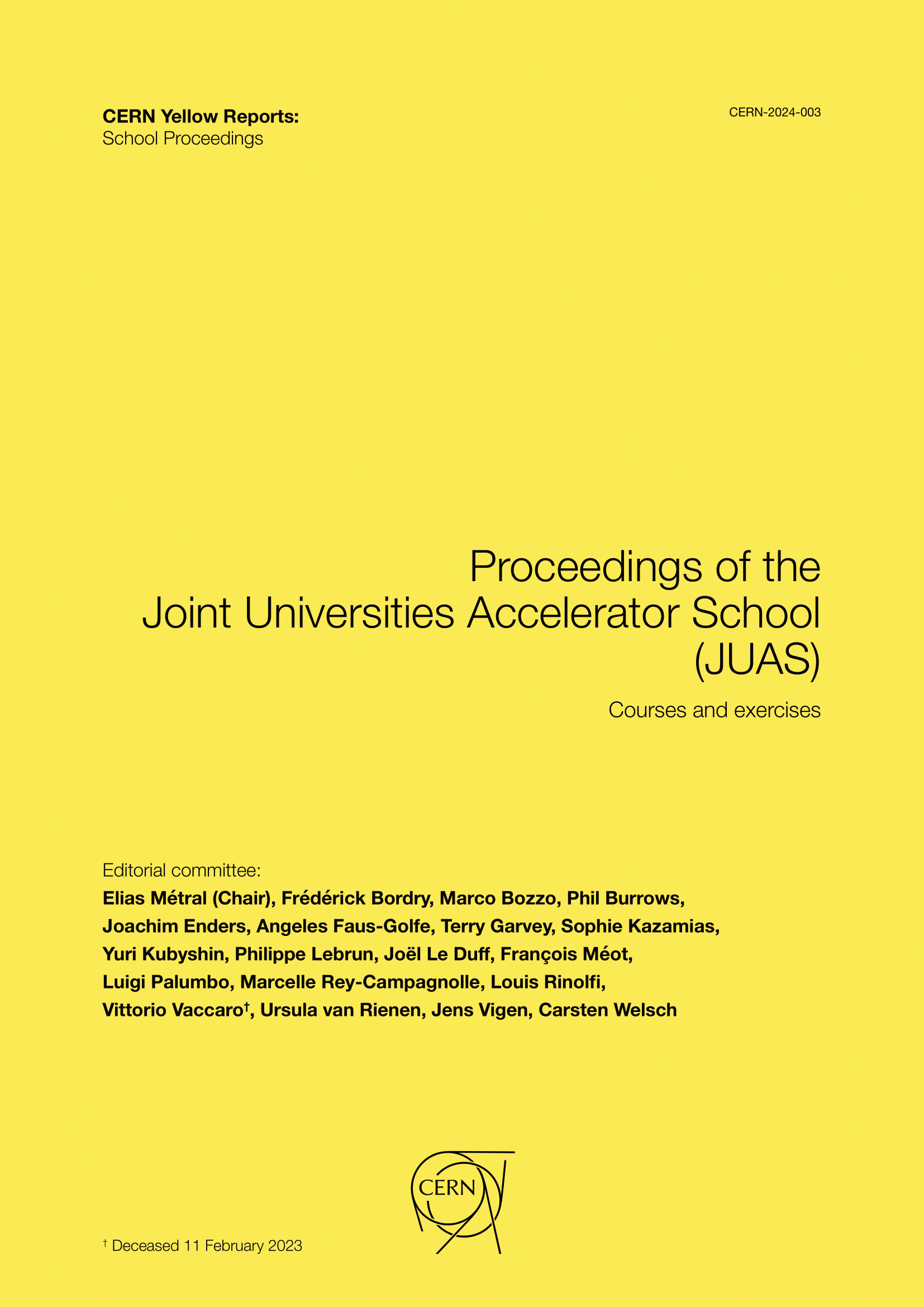III.6 — Beam coupling impedance measurements with beam and on a bench
DOI:
https://doi.org/10.23730/CYRSP-2024-003.2029Abstract
The beam coupling impedance is one of the key quantities describing the interaction between a particle beam travelling in a particle accelerator and its surroundings. Under specific circumstances, the impedance can lead to severe beam instabilities which limit the overall performance of a running accelerator or pose challenges for the achievement of a project.
In this contribution, we present the main techniques in use to characterize the impedance either with beam-based procedures, or with RF measurements on a test bench. The former is usually performed on running machines for which limitations are found or need to be assessed, the latter is typically performed before/after equipment installation and for validation purposes.
We will also introduce some of the measurement techniques used to characterize the electromagnetic properties of materials. This is relevant, for example, for the correct material modelling in simulations, or to validate a fabrication process.
Downloads
Published
Issue
Section
License

This work is licensed under a Creative Commons Attribution 4.0 International License.
Authors who publish with this publication agree to the following terms:
- CERN retains copyright and publishes the work licensed under the Creative Commons Attribution License 4.0 that allows others to share the work with an acknowledgement of the work's authorship and initial publication in this series.
- Authors are able to enter into separate, additional contractual arrangements for distribution of the published version of the work (e.g., post it to an institutional repository or publish it in a book), with an acknowledgement of its initial publication in this series.
- Authors are permitted and encouraged to post their work online (e.g., in institutional repositories or on their website) prior to and during the submission process, as it can lead to productive exchanges, as well as earlier and greater citation of published work (See The Effect of Open Access).

